VACUUBRAND MZ 2C NT User Manual
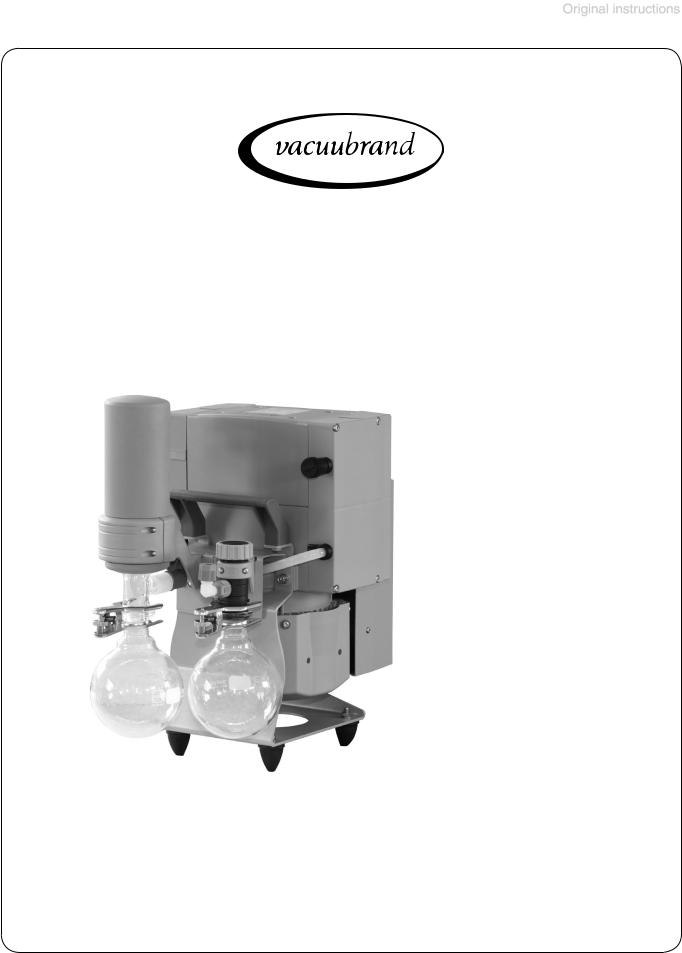
page 1 of 76
Technology for Vacuum Systems
Instructions for use
ME 4C NT VARIO
MZ 2C NT VARIO
MD 4C NT VARIO
MV 10C VARIO-B
MD 12C VARIO-B
PC 3002 VARIO
PC 3003 VARIO
PC 3004 VARIO
PC 3010 VARIO
PC 3012 VARIO
Speed controlled chemistry diaphragm pumps and chemistry pumping units without controller (o.C.)

page 2 of 76
Dear customer,
Your VACUUBRAND diaphragm pumps are designed to provide you with many years of trouble-free service with optimal performance. Our many years of practical experience allow us to provide a wealth of application and safety information. Please read these instructions for use before the initial operation of your pump.
VACUUBRAND diaphragm pumps combine our many years of experience in design, construction and practical operation, with the latest developments in material and manufacturing technology.
Our quality maxim is the ”zero defect” principle:
Every diaphragm pump, before leaving our factory, is tested intensively, including an endurance run of 14 hours. Any faults, even those which occur rarely, are identified and can be eliminated immediately.
After completion of the endurance run, every pump is tested, and must achieve specifications before shipment.
We are committed to providing our customers only pumps that meet this high quality standard.
While our pumps cannot eliminate all of your work, we design, manufacture and test them to ensure that they will be an effective and trouble-free tool to assist you in that work.
Yours,
VACUUBRAND GMBH + CO KG
After sales service:
Contact your local dealer or call +49 9342 808-5500.
Trademark index:
VACUU•LAN® (US-Reg.No 3,704,401), VACUU•BUS®, VACUU•CONTROLTM, chemistry-HYBRIDTM, Peltronic®, TURBO•MODETM, VARIO® (US-Reg.No 3,833,788), VARIO-SPTM, VACUUBRAND® (US-Reg.No 3,733,388) and also the shown company logos are trademarks of VACUUBRAND GMBH + CO KG in Germany and/or other countries.

page 3 of 76
DE
Achtung: Die vorliegende Betriebsanleitung ist nicht in allen EU-Sprachen verfügbar. Der Anwender darf die beschriebenen Geräte nur dann in Betrieb nehmen, wenn er die vorliegende Anleitung versteht oder eine fachlich korrekte Übersetzung der vollständigen Anleitung vorliegen hat. Die Betriebsanleitung muss vor Inbetriebnahme der Geräte vollständig gelesen und verstanden werden, und alle geforderten Maßnahmen müssen eingehalten werden.  ”Sicherheitshinweise für Vakuumgeräte”
”Sicherheitshinweise für Vakuumgeräte”
EN
Attention: This manual is not available in all languages of the EU. The user must not operate the device if he does not understand this manual. In this case a technically correct translation of the complete manual has to be available. The manual must be completely read and understood before operation of the device and all required measures must be applied.  ”Safety instructions for vacuum equipment”
”Safety instructions for vacuum equipment”
FR
Attention: Le mode d’emploi présent n’est pas disponible dans toutes les langues d’Union Européenne. L’utilisateur ne doit mettre le dispositif en marche que s’il comprend le mode d’emploi présent ou si une traduction complète et correcte du mode d’emploi est sous ses yeux. Le dispositif ne doit pas être mis en marche avant que le mode d’emploi ait été lu et compris complètement et seulement si le mode d’emploi est observé et tous les mesures demandées sont prises.
 «Avis de sécurité pour des dispositifs à vide»
«Avis de sécurité pour des dispositifs à vide»
BG
Внимание: Тези инструкции не са преведени на всички езици от ЕО. Потребителят не бива да работи с уреда, ако не разбира инструкциите за ползване. В този случай е необходимо да бъде предоставен пълен технически превод на инструкциите за ползване. Преди работа с уреда е задължително потребителят да прочете изцяло инструкциите за работа.
 ”Указания за безопасност за вакуумни уреди”
”Указания за безопасност за вакуумни уреди”
CN

CZ
Upozornění :Tento návod k použití není k dispozici ve všech jazycích Evropské unie. Uživatel není oprávněn požít přístroj pokud nerozumí tomuto návodu. V takovém případě je nutno zajistit technicky korektní překlad manuálu do češtiny. Návod musí být uživatelem prostudován a uživatel mu musí plně porozumět před tím než začne přístroj používat. Uživatel musí dodržet všechna příslušná a požadovaná opatření.  ”Bezpečnostní upozornění pro vakuové přístroje”.
”Bezpečnostní upozornění pro vakuové přístroje”.

page 4 of 76
DA
Bemærk: Denne manual foreligger ikke på alle EU sprog. Brugeren må ikke betjene apparatet hvis manualen ikke er forstået. I det tilfælde skal en teknisk korrekt oversættelse af hele manual stilles til rådighed. Manual skal være gennemlæst og forstået før apparatet betjenes og alle nødvendige forholdsregler skal tages.
 »Sikkerhedsregler for vakuumudstyr«
»Sikkerhedsregler for vakuumudstyr«
EE
Tähelepanu! Käesolev kasutusjuhend ei ole kõigis EL keeltes saadaval. Kasutaja ei tohi seadet käsitseda, kui ta ei saa kasutusjuhendist aru. Sel juhul peab saadaval olema kogu kasutusjuhendi tehniliselt korrektne tõlge. Enne seadme kasutamist tuleb kogu juhend läbi lugeda, see peab olema arusaadav ning kõik nõutud meetmed peavad olema rakendatud.  ”Ohutusnõuded vaakumseadmetele”
”Ohutusnõuded vaakumseadmetele”
ES
Atención: Este manual no está disponible en todos los idiomas de UE. El usuario no debe manejar el instrumento si no entiende este manual. En este caso se debe disponer de una traducción técnicamente correcta del manual completo. El manual debe ser leído y entendido completamente y deben aplicarse todas las medidas de seguridad antes de manejar el instrumento. ”Notas sobre la seguridad para equipos de vacío”
FI
Huomio: Tämä käyttöohje ei ole saatavilla kaikilla EU: n kielillä. Käyttäjä ei saa käyttää laitetta, jos hän ei ymmärrä tätä ohjekirjaa. Tässä tapauksessa on saatavilla oltava teknisesti oikein tehty ja täydellinen ohjekirjan käännös. Ennen laitteen käyttöä on ohjekirja luettava ja ymmärrettävä kokonaan sekä suoritettava kaikki tarvittavat valmistelut ja muut toimenpiteet.  ”Vakuumilaitteen turvallisuustiedot”
”Vakuumilaitteen turvallisuustiedot”
GR
Προσοχή! : Οι οδηγίες αυτές δεν είναι διαθέσιµες σε όλες τις γλώσσες της Ευρωπαϊκής Ένωσης. Ο χρήστης δεν πρέπει να θέσει σε λειτουργία την συσκευή αν δεν κατανοήσει πλήρως τις οδηγίες αυτές. Σε τέτοια περίπτωση ο χρήστης πρέπει να προµηθευτεί ακριßή µετάφραση του ßιßλίου οδηγιών. Ο χρήστης πρέπει να διαßάσει και να κατανοήσει πλήρως τις οδηγίες χρήσης και να λάßει όλα τα απαραίτητα µέτρα πριν θέσει σε λειτουργία την συσκευή. ”Υποδείξεις ασφάλειας για αντλίες κενού”
HR
Pažnja:ove upute ne postoje na svim jezicima Europske Unije. Korisnik nemora raditi sa aparatom ako ne razumije ove upute.U tom slucaju tehnicki ispravni prijevod cijelih uputstava mora biti na raspolaganju. Uputstva moraju biti cijela procitana i razumljiva prije rada sa aparatom i sve zahtijevane mjere moraju biti primjenjene.
 ”Sigurnosne napomene za vakuumske uređaje”
”Sigurnosne napomene za vakuumske uređaje”
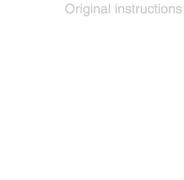
page 5 of 76
HU
Figyelem! Ez a kezelési utasítás nem áll rendelkezésre az EU összes nyelvén. Ha a felhasználó nem érti jelen használati utasítás szövegét, nem üzemeltetheti a készüléket. Ez esetben a teljes gépkönyv fordításáról gondoskodni kell. Üzembe helyezés előtt a kezelőnek végig kell olvasnia, meg kell értenie azt, továbbá az üzemeltetéshez szükséges összes mérést el kell végeznie. ”A vákuum-készü- lékekkel kapcsolatos biztonsági tudnivalók”
IT
Attenzione: Questo manuale non è disponibile in tutte le lingue della Comunità Europea (CE). L‘utilizzatore non deve operare con lo strumento se non comprende questo manuale. In questo caso deve essere resa disponibile una traduzione tecnicamente corretta del manuale completo. Il manuale deve essere completamente letto e compreso prima di operare con lo strumento e devono essere applicati tutti gli accorgimenti richiesti.  ”Istruzioni di sicurezza per apparecchi a vuoto”
”Istruzioni di sicurezza per apparecchi a vuoto”
JP
ません。そして、すべての要求される対策を講じなければなりません。

KR
: ... .

LT
Dėmesio: šis vadovas nėra pateikiamas visomis ES kalbomis. Naudotojui draudžiama eksploatuoti įtaisą, jeigu jis nesupranta šio vadovo. Tokiu atveju reikia turėti viso vadovo techniškai taisyklingą vertimą. Vadovą būtina visą perskaityti ir suprasti pateikiamas instrukcijas prieš pradedant eksploatuoti įtaisą, bei imtis visų reikiamų priemonių.  ”Vakuuminės įrangos saugos informacija”
”Vakuuminės įrangos saugos informacija”
LV
Uzmanību: Lietotāja instrukcija nav pieejama visās ES valodās. Lietotājs nedrīkst lietot iekārtu, ja viņš nesaprot lietotāja instrukcijā rakstīto. Šādā gadījumā, ir nepieciešams nodrošināt tehniski pareizu visas lietotāja instrukcijas tulkojumu. Pirms sākt lietot iekārtu, un, lai izpildītu visas nepieciešamās prasības, iekārtas lietotāja instrukcija ir pilnībā jāizlasa un jāsaprot.  ”Vakuuma iekārtu drošības noteikumi”
”Vakuuma iekārtu drošības noteikumi”

page 6 of 76
NL
Attentie: Deze gebruiksaanwijzing is niet in alle talen van de EU verkrijgbaar. De gebruiker moet niet met dit apparaat gaan werken als voor hem/haar de gebruiksaanwijzing niet voldoende duidelijk is. Bij gebruik van deze apparatuur is het noodzakelijk een technisch correcte vertaling van de complete gebruiksaanwijzing te hebben. Voor het in gebruik nemen van het apparaat moet de gebruiksaanwijzing volledig gelezen en duidelijk zijn en dienen alle benodigde maatregelen te zijn genomen.  ”Veiligheidsvoorschriften voor vacuümapparaten”
”Veiligheidsvoorschriften voor vacuümapparaten”
PL
Uwaga!! Ta instrukcja nie jest dostępna we wszystkich językach Unii Europejskiej. Użytkownik nie może rozpocząć pracy z urządzeniem dopóki nie przeczytał instrukcji i nie jest pewien wszystkich informacji w niej zawartych. Instrukcja musi byc w całości przeczytana i zrozumiana przed podjęciem pracy z urządzeniem oraz należy podjąć wszystkie niezbędne kroki związane z prawidłowym uzytkowaniem.
 ”Wskazówki bezpieczeństwa do urządzeń próżniowych”
”Wskazówki bezpieczeństwa do urządzeń próżniowych”
PT
Atenção: Este manual não está disponível em todas as línguas da UE. O usuário não deve utilizar o dispositivo, se não entender este manual. Neste caso, uma tradução tecnicamente correta do manual completo tem de estar disponível. O manual deve ser lido e entendido completamente antes da utilização do equipamento e todas as medidas necessárias devem ser aplicadas. ”Informação de Segurança para Equipamento que funciona a Vácuo”
RO
Atentie: Acest manual nu este disponibil in toate limbile EU. Utilizatorul nu trebuie sa lucreze cu aparatul daca daca nu intelege manualul. Astfel, va fi disponibile o traducere corecta si completa a manualului. Manualul trebuie citit si inteles in intregime inainte de a lucra cu aparatul si a luat toate masurile care se impun.
 ”Instrucţiuni de siguranţă pentru aparatele de vidare”
”Instrucţiuni de siguranţă pentru aparatele de vidare”
RU
Внимание: Эта инструкция по эксплуатации не имеется на всех языках. Потребителю не дозволенно эксплуатировать данный прибор, если он не понимает эту инструкцию. В этом случае нужен технически правильный перевод полной инструкции. Прежде чем использовать этот прибор, необходимо полностью прочитать и понять эту инструкцию и принять все не-
обходимые меры. ”Указания по технике безопасности при работе с вакуумными устройствами”

page 7 of 76
SE
Varning: Denna instruktion är inte tillgänglig på alla språk inom EU. Användaren får inte starta utrustningen om hon/han inte förstår denna instruktion. Om så är fallet måste en tekniskt korrekt instruktion göras tillgänglig. Instruktionen måste läsas och förstås helt före utrustningen tas i drift och nödvändiga åtgärder göres.
 ”Säkerhetsinformation för vakuumutrustning”
”Säkerhetsinformation för vakuumutrustning”
SI
Pozor: Ta navodila niso na voljo v vseh jezikih EU. Uporabnik ne sme upravljati z napravo, če ne razume teh navodil. V primeru nerazumljivosti mora biti na voljo tehnično pravilen prevod. Navodila se morajo prebrati in razumeti pred uporaba naprave, opravljene pa moraja biti tudi vse potrebne meritve.
 ”Varnostni nasveti za vakuumske naprave”
”Varnostni nasveti za vakuumske naprave”
SK
Upozornenie: Tento manuál nie je k dispozícii vo všetkých jazykoch EÚ. Užívateľ nesmie obsluhovať zariadenie, pokiaľ nerozumie tomuto manuálu. V takomto prípade musí byť k dispozícii technicky správny preklad celého manuálu. Pred obsluhou zariadenia je potrebné si prečítať celý manuál a porozumieť mu, a musia byť prijaté všetky opatrenia.  ”Bezpečnostné pokyny pre vákuové zariadenia”
”Bezpečnostné pokyny pre vákuové zariadenia”
TR
Dikkat : Bu kullanım kitabı, tüm dillerde mevcut değildir. Kullanıcı, bu kullanım kitabını anlayamadıysa cihazı çalıştırmamalıdır. Bu durumda, komple kullanım kitabının, teknik olarak düzgün çevirisinin bulunması gerekir. Cihazın çalıştırılmasından önce kullanım kitabının komple okunması ve anlaşılması ve tüm gerekli ölçümlerin uygulanması gerekir.  ”Vakumlu cihazlar için güvenlik uyarıları”
”Vakumlu cihazlar için güvenlik uyarıları”

page 8 of 76 |
|
Contents |
|
Safety information!........................................................... |
10 |
Important information!........................................................................ |
10 |
General information........................................................................... |
12 |
Intended use...................................................................................... |
12 |
Setting up and installing the equipment............................................. |
13 |
Ambient conditions............................................................................. |
15 |
Operating conditions.......................................................................... |
16 |
Maintenance and repair..................................................................... |
20 |
`Important information: Equipment marking (ATEX)...................... |
22 |
Technical data................................................................... |
24 |
General technical data valid for all pumps/pumping units.................. |
24 |
Gas inlet temperatures...................................................................... |
25 |
Wetted parts...................................................................................... |
29 |
Abbreviations.................................................................................... |
30 |
Pump parts........................................................................................ |
30 |
Use and operation............................................................. |
36 |
Installing a pump in a vacuum system............................................... |
36 |
During operation................................................................................ |
40 |
Important notes regarding the use of gas ballast............................... |
42 |
Important notes concerning the operation |
|
of the exhaust waste vapor condenser.............................................. |
43 |
Shutdown & storage........................................................................... |
45 |
Accessories....................................................................... |
46 |
Troubleshooting................................................................ |
48 |
Replacing diaphragms and valves.................................. |
49 |
Cleaning and inspecting the pump heads |
|
(pumps NT VARIO / PC 300x VARIO).............................................. |
50 |
Replacing the diaphragm.................................................................. |
55 |
Replacing the valves......................................................................... |
57 |
Cleaning and inspecting the pump heads |
|
(pumps VARIO-B / PC 301x VARIO)............................................... |
61 |
Replacing the diaphragm.................................................................. |
65 |
Assembling the pump heads............................................................. |
66 |
Replacing the valve at the distributor (outlet side)............................ |
67 |
Assembling the connecting hoses..................................................... |
68 |
Replacing the device fuse................................................................. |
70 |
Notes on return to the factory.......................................... |
71 |

page 9 of 76 |
|
Warranty............................................................................. |
73 |
Health and safety clearance form.................................... |
74 |
EC Declaration of Conformity of the Machinery ............... |
75 |
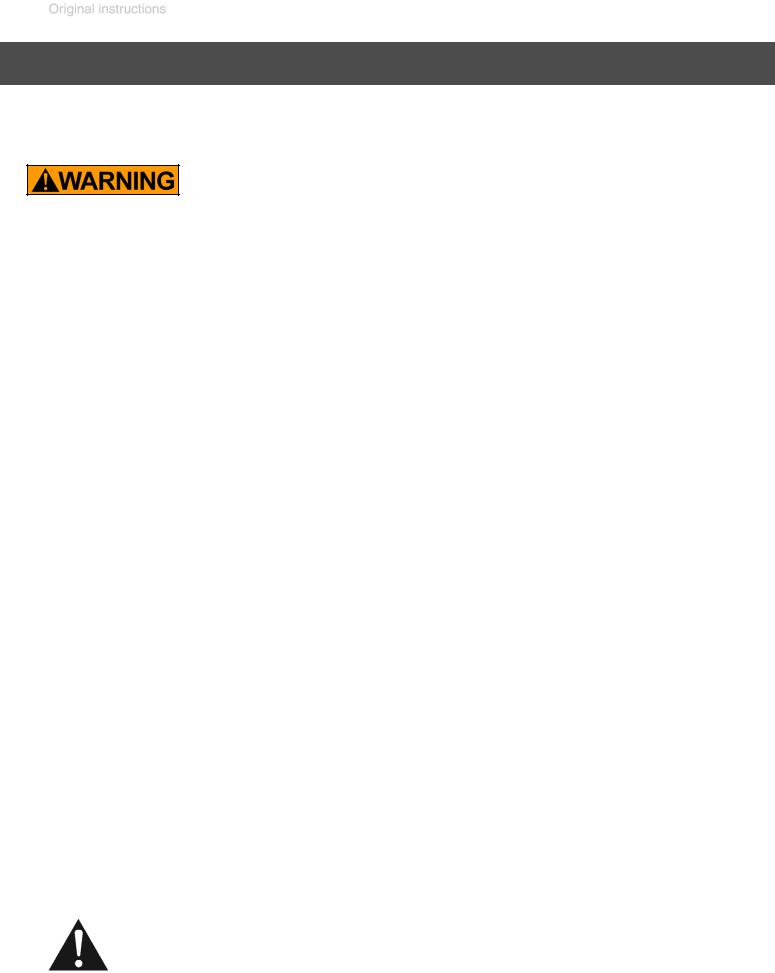
page 10 of 76
Safety information!
Important information!
+Keep this manual complete and accessible to personnel at all times!
+Read this manual carefully before installing or operating the equipment. Observe the instructions contained in this manual.
+Do not modify the equipment without authorization.
|
This manual is an integral part of the equipment de- |
NOTICE |
|
|
scribed therein. It describes the safe and proper use |
|
of the vacuum pump. |
|
Make operating personnel aware of dangers arising |
|
from the pump and the pumped substances. |
|
VACUUBRAND disclaims any liability for inappropri- |
|
ate use of these pumps and for damage from failure |
|
to follow instructions contained in this manual. |
|
This manual is only to be used and distributed in its com- |
|
plete and original form. It is strictly the users’ responsibility |
|
to check carefully the validity of this manual with respect |
|
to his product. |
|
Manual-no.: 999200 / 02/05/2014 |
The following signal word panels and safety symbols are used throughout this manual:
This is the safety alert symbol. It is used to alert you to potential personal injury hazards. Obey all safety messages that follow this symbol to avoid possible injury and death.

page 11 of 76
DANGER indicates a hazardous situation which, if not avoided, will result in death or serious injury.
+WARNING indicates a hazardous situation which, if not avoided, could result in death or serious injury.
•CAUTION indicates a hazardous situation which, if not avoided, could result in minor or moderate injury.
|
NOTICE is used to address practices not related to |
NOTICE |
|
|
personal injury. |
Caution! Hot surface!
Disconnect equipment from AC power.
Formatting used in this manual:
Note: The signal word panels in all sections of this manual always refer to all paragraphs of the same format ( / + / • / plain text) following each signal word panel.

page 12 of 76
General information
To operate the pump / the pumping unit, a CVC 3000 or VNC 2 VACUUBRAND controller is required!
|
|
Remove all packing material from the packing box. Re- |
NOTICE |
||
|
|
move the product from its packing-box and retain all pack- |
|
|
aging until the equipment is inspected and tested. Re- |
|
|
move the protective caps from the inlet and outlet ports |
|
|
and retain for future use. Inspect the equipment promptly |
|
|
and carefully. |
|
|
If the equipment is damaged, notify the supplier and the |
|
|
carrier in writing within three days. Retain all packing ma- |
|
|
terial for inspection. State the item number of the product |
|
|
together with the order number and the supplier’s invoice |
|
|
number. Failure to check and give notice of damage will |
|
|
void any and all warranty claims for those deficiencies. |
|
|
Replace the protective caps, if the equipment is not used |
|
|
immediately. Store the equipment in dry and non-corrosive |
|
|
conditions (see also “Technical data”, pg. 24). |
|
|
+ Do not use any damaged equipment. |
|
|
|
|
|
|
•Use the mounted handle or the recessed grips when moving the pump.
Intended use
Do not use the pump or any system parts on humans or animals.
Ensure that the individual components are only connected, combined and operated according to their design and as indicated in the instructions for use. Use only original manufacturer’s spare parts and accessories. Otherwise the safety and performance of the equipment, as well as the electromagnetic compatibility of the equipment might be reduced.
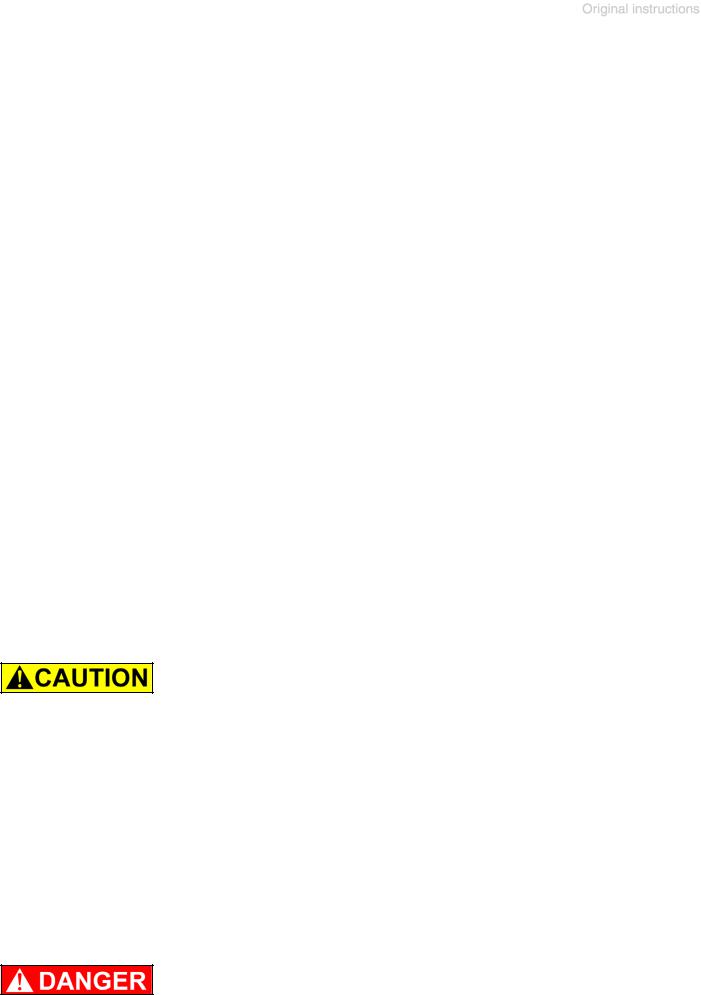
page 13 of 76
The CE mark or the cTÜVus mark may be voided if not using original manufacturer’s spare parts.
Comply with all notes on correct vacuum and electrical connections; see section “Use and operation”, pg. 36.
+Do not use the pump to generate pressure.
+The pumps are designed for ambient temperatures during operation between +50°F and +104°F (+10°C and +40°C). Periodically check maximum temperatures if installing the pump in a cabinet or a housing.
Make sure ventilation is adequate to maintain recommended operating temperature. Install an external automatic ventilation system if necessary. If pumping hot process gases, make sure that the maximum permitted gas inlet temperature is not exceeded. The maximum permitted gas inlet temperature depends on several parameters like inlet pressure and ambient temperature (see “Technical data”, pg. 24).
+Particles and dust must not enter the pump.
+Do not pump liquids.
•Ensure that the pump is chemically resistant to the pumped substances prior to operation.
|
Use the equipment only as intended, that is, for genera- |
NOTICE |
|
|
tion, measurement, and control of vacuum in vessels de- |
|
signed for that purpose. Any other use will automatically |
|
invalidate all warranty and liability claims. Remain aware |
|
of safety and risks. |
Setting up and installing the equipment
Equipment must be connected only to a suitable electrical supply and a suitable ground point. As such, the plug must be plugged into an outlet that is properly grounded. Failure to connect the motor to ground may

page 14 of 76
result in deadly electrical shock.
The supply cable may be fitted with a molded European IEC plug or a plug suitable for your local electrical supply. The cable contains wires color coded as follows: green or green and yellow: ground; blue or white: neutral; brown or black: hot.
Due to the high compression ratio, the pump may generate overpressure at the outlet. Check pressure compatibility with system components (e.g., exhaust pipeline or exhaust valve) at the outlet.
Do not permit any uncontrolled pressurizing. Make sure that the exhaust pipeline cannot become blocked. If there is an exhaust isolation valve, make sure that you cannot operate the equipment with the valve closed to avoid a risk of bursting!
Keep the electrical power cord away from heated surfaces.
•Provide a firm, level platform for the equipment. Check that the system which you are going to evacuate is mechanically stable. Check that all fittings are secure.
Ensure a stable position of the pump without any mechanical contact other than the pump feet.
•Comply with maximum permissible pressures at inlet and outlet and with maximum permissible pressure differences between inlet and outlet. See section “Technical data”, pg. 24. Do not operate the pump with overpressure at the inlet.
•Avoid overpressure of more than 17.5 psi absolute (1.2 bar absolute) in the event that inert gas is connected to the pump, to the gas ballast or to a venting valve.
•Note: Flexible elements will shrink when evacuated.
•Connect hoses gas tight at inlet and outlet of the pump.
•Ensure that no foreign objects can be drawn into the pump.
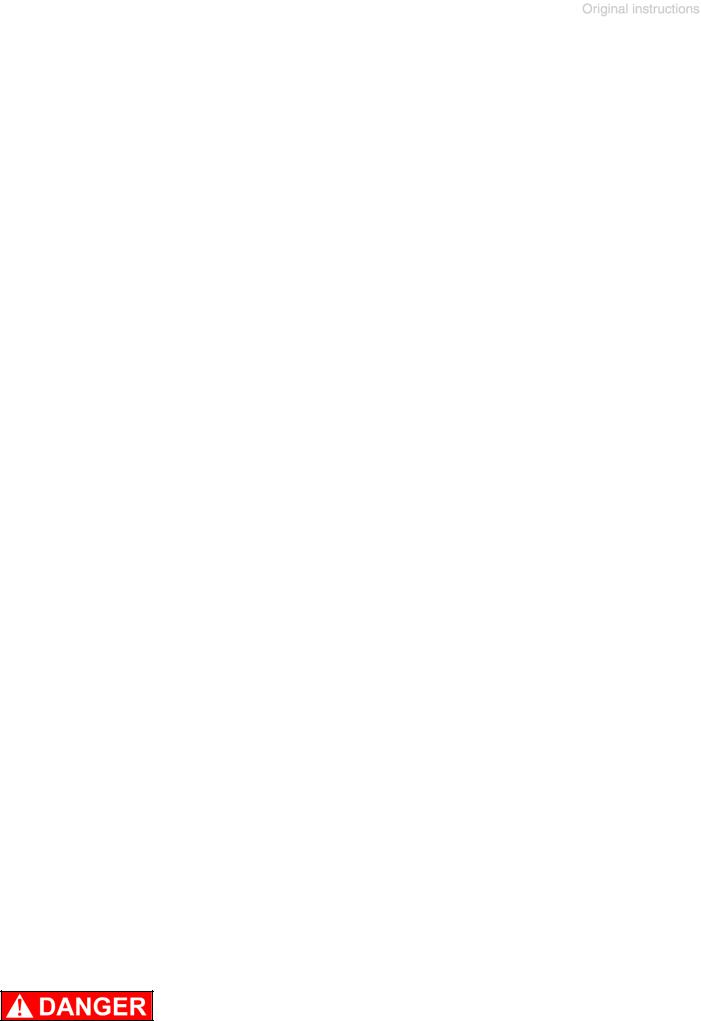
page 15 of 76
•Check the power source and the pump’s rating plate to be sure that the power source and the equipment match in voltage, phase, and frequency.
•Ensure that the coolant outlet pipe is always free and that it cannot get blocked. If installing an optional coolant valve, it must always be in the supply line of the exhaust waste vapor condenser.
|
Make sure ventilation is adequate to maintain recommend- |
NOTICE |
|
|
ed operating temperature. Keep a minimum distance of |
|
2 in (5 cm) between the cooling fan and surrounding items |
|
(e.g., housing, walls, etc.), or else install an external auto- |
|
matic ventilation system. Check fan regularly for dust/dirt. |
|
Clean fan guard grill if necessary to avoid a reduction of |
|
ventilation. |
|
Use only hoses at the inlet and outlet of the pump with |
|
an inner diameter at least as large as the diameter of the |
|
pump’s tubing (to avoid overpressure at the outlet, and |
|
reduction of pumping speed at the inlet). |
|
Allow the equipment to equilibrate to ambient temperature |
|
if you bring it from cold environment into a room prior to |
|
operation. Notice if there is water condensation on cold |
|
surfaces. |
|
Secure coolant hoses at the hose nozzles (e.g., with hose |
|
clamp) to prevent their accidental slipping. |
|
Comply with all applicable and relevant safety require- |
|
ments (regulations and guidelines). Implement the re- |
|
quired actions and adopt suitable safety measures. |
Ambient conditions
Do not reach for this product if it has fallen into liquid.
There is a risk of deadly electrical shock. Unplug the system immediately.

page 16 of 76
+Do not use this product in an area where it can fall or be pulled into water or other liquids.
•Adopt suitable measures in case of differences from recommended conditions, e.g., using the equipment outdoors, installation in higher altitudes, conductive pollution or external condensation on the pump.
•Do not operate this product near flames.
|
To the best of our knowledge the equipment is in com- |
NOTICE |
|
|
pliance with the requirements of the applicable EC-direc- |
|
tives and harmonized standards (see ”Declaration of Con- |
|
formity”) with regard to design, type and model. Directive |
|
EN 61010-1 gives in detail the conditions under which the |
|
equipment can be operated safely (see also IP degree of |
|
protection, “Technical data”, pg. 24). |
Operating conditions
These pumps are not approved for operation in potentially explosive atmospheres. Do not operate the pumps in potentially explosive atmospheres.
Pumps without the ”`” mark on the rating plate are not approved for the pumping of potentially explosive atmospheres. Do not pump potentially explosive atmospheres with those pumps.
Pumps bearing the ”`” mark on their rating plates are approved for the pumping of potentially explosive atmospheres according to their classification
II 3G IIC T3 X according to ATEX, but they are not
approved for operation in potentially explosive atmospheres (see section “` Important information: Equipment marking (ATEX)”, pg. 22).
The pumps are not suitable to pump any of the substances listed below.
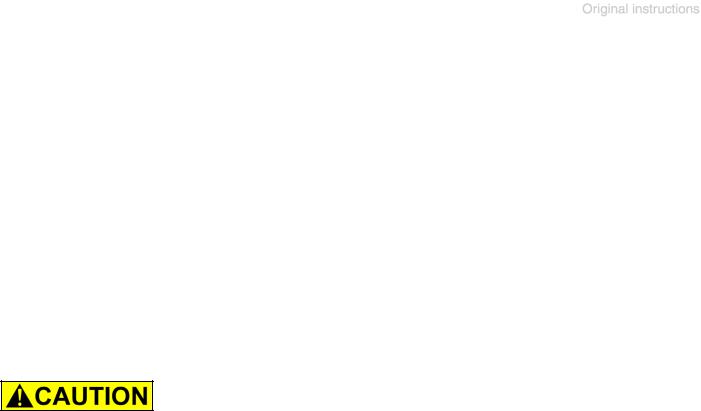
page 17 of 76
Do not pump:
-unstable substances
-substances which react explosively under impact
(mechanical stress) without air
-substances which react explosively when being exposed to elevated temperatures without air,
-substances subject to auto-ignition,
-substances which are inflammable without air
-explosive substances.
The pumps are not approved for operation below ground. Do not operate the pump below ground.
•Do not pump substances which may form deposits inside the pump. The pumps are not suitable for pumping substances which may form deposits inside the pump. Deposits and condensate in the pump may lead to increased temperatures even to the point of exceeding the maximum permitted temperatures.
•Check the inlet and outlet of the pump, if there is a danger of forming deposits inside the pump, e.g., in the pump chambers (the pump chamber is the part between diaphragm and head cover. See section “Replacing diaphragms and valves”, pg. 49). Inspect the pump chambers regularly and clean if necessary.
•Consider interactions and chemical reactions of the pumped media. Ensure that the materials of the pump’s wetted parts are compatible with the pumped substances, see section “Technical data”, pg. 24.
When changing the substances pumped, we recommend purging the pump with air or inert gas prior to changing the pumped media. Purging the pump will pump out residues and it will reduce the possibility of reactions of the pumped substances with each other and with the pump’s materials.

page 18 of 76
Safety during operation
Adopt suitable measures to prevent the release of dangerous, toxic, explosive, corrosive, noxious or polluting fluids, vapors and gases. To prevent any emission of such substances from the pump outlet, install an appropriate collecting and disposal system and take protective action for pump and environment.
You must take suitable precautions to prevent any formation of explosive mixtures in the pump chamber or at the outlet of the pump. In case, e.g., of a diaphragm failure, mechanically generated sparks, hot surfaces or static electricity may ignite these mixtures. Use inert gas for gas ballast or venting, if necessary.
Drain appropriately or otherwise remove any potentially explosive mixtures at the outlet of the pump, or dilute them to non-explosive concentrations.
Never operate this pump if it has a damaged cord or plug.
+If the pump is not working properly, has been dropped or has fallen into water, contact your pump service provider.
+Prevent any part of the human body from coming into contact with vacuum.
+Make sure that the exhaust pipeline cannot become blocked.
Check the overpressure safety relief device at the exhaust waste vapor condenser at appropriate intervals.
+Comply with applicable regulations when disposing of chemicals. Take into consideration that chemicals may be contaminated. Take adequate precautions to protect people from the effects of dangerous substances
(chemicals, thermal decomposition products of fluoroelastomers).
Use appropriate protective clothing and safety goggles.

page 19 of 76
+Interruption of the pump (e.g., due to power failure), failure of connected components or of parts of the supply, or change in parameters must not be allowed to lead to dangerous conditions. In case of a diaphragm failure or in case of a leak in the manifold, pumped substances might be released into the environment or into the pump housing or motor.
Comply with all notes regarding proper use of the pumps, as well as operation and maintenance guidance.
+The residual leak rate of the equipment might render possible an exchange of gas, albeit extremely slight, between the environment and the vacuum system.
Adopt suitable measures to prevent contamination of the pumped substances or the environment.
•Ensure that no parts of your clothing, hair or fingers can be caught or drawn in at the inlet of the pump.
Never insert fingers or drop any other object into the inlet or outlet.
•Pumping at high inlet pressure may lead to overpressure at the gas ballast valve. Pumped gases or condensate might be expelled if the valve is open. If an inert gas supply is connected to the gas ballast, ensure that its inlet pipeline is not contaminated.
•Pay attention to the safety symbol ”hot surfaces” on the equipment. Hot parts may cause burns if touched. Adopt suitable measures to prevent any danger arising from hot surfaces or electric sparks. Ensure that hot surfaces of the pump do not cause burns. Provide a suitable contact guard if necessary.
•Ensure that the coolant outlet pipe at the waste vapor condenser is always free and that it cannot get blocked.
|
Prevent the backpressure of gases and the backflow of |
NOTICE |
|
|
condensates at the outlet. |

page 20 of 76
Check the liquid level in the catchpots or in the collecting flask regularly and drain condensate in time to prevent overfilling. Install a level sensor (see “Accessories”, pg.
46; a CVC 3000 or VNC 2 controller is required for operation) for monitoring, if necessary.
Provide appropriate protective measures to allow for the possibility of failure and malfunction. The protective measures must also allow for the requirements of the respective application.
In case of overload, the motor is shut down by a self-hold thermal cutout in the winding.
Note: Only manual reset is possible. Switch off the pump and disconnect from the power source. Identify and eliminate the cause of failure. Wait approx. five minutes before restarting the pump.
|
Maintenance and repair |
|
In order to comply with laws (occupational, health and |
NOTICE |
|
|
safety regulations, safety at work law and regulations for |
|
environmental protection) vacuum pumps, components |
|
and measuring instruments can only be returned when |
|
certain procedures (see section “Notes on return to the |
|
factory”, pg. 71) are followed. |
|
Take advantage of our service seminars, which put special |
|
focus on the maintenance and repair of vacuum pumps. |
|
For details and for the online ”Instructions for repair” man- |
|
ual see www.vacuubrand.com. |
|
In normal use, the lifetime of the diaphragms and valves is |
|
typically 15,000 operating hours. Bearings have a typical |
|
durability of 40000 h. |
Ensure that the pump cannot be operated accidentally. Never operate the pump if covers or other parts of the pump are disassembled.

page 21 of 76
Switch off the pump. Disconnect the electrical power cord and wait two minutes before starting maintenance to allow the capacitors to discharge.
Note: The pump may be contaminated with process chemicals, which have been pumped during operation.
Ensure that the pump is completely decontaminated before maintenance commences.
Take adequate precautions to protect people from the effects of dangerous substances if contamination has occurred. Use appropriate protective clothing, safety goggles and protective gloves.
+Wear parts have to be replaced regularly.
+Never operate a defective or damaged pump.
+Vent the pump before starting maintenance. Isolate the pump and other components from the vacuum system. Allow sufficient cooling of the pump. Separate the pump from the coolant circuit and drain condensate, if applicable.
|
Ensure that maintenance is done only by suitably trained |
NOTICE |
|
|
and supervised technicians. Ensure that the maintenance |
|
technician is familiar with the safety procedures which re- |
|
late to the products processed by the pumping system. |
|
Only dismantle the pump as far as necessary. |

page 22 of 76
` Important information: Equipment marking (ATEX)
VACUUBRAND equipment bearing mark (see rating plate)
`II 3G IIC T3 X
Internal Atm. only Tech. File Ref.: VAC-EX01
and
VACUUBRAND equipment bearing mark (see rating plate)
`X see manual
For equipment labelled with „`X see manual“ the following classification according to Directive 94/9/EC (ATEX) is valid: ` II 3G IIC T3 X,
Internal Atm. only, Tech. File Ref.: VAC-EX01.
The classification II 3G IIC T3 X according to ATEX is only valid for the inner part (wetted part, pumped gas or vapor) of the equipment. The equipment is not suitable for use in external, potentially explosive atmospheres
(environment).
The overall category of the equipment depends on the connected components. If the connected components do not comply with the classification of the VACUUBRAND equipment, the specified category of the
VACUUBRAND equipment is no longer valid.
Vacuum pumps and vacuum gauges in category 3 are intended for connection to equipment in which during normal operation explosive atmospheres caused by gases, vapors or mists normally don’t occur; or, if they do occur, are likely to do so only infrequently and for a short period only. Equipment in this category ensures the requisite level of protection during normal operation.
The use of gas ballast or the operation of venting valves is only permitted if thereby explosive atmospheres normally don’t occur in the interior of the equipment or, if they do occur, are likely to do so only infrequently and for a short period.

page 23 of 76
The pumps are marked with ”X” (according to EN 13463-1), i.e., restrictions of the operation conditions:
•The equipment is designated for a low degree of mechanical stress and has to be installed in a way so that it cannot be damaged from outside.
Pumping units have to be installed so that they are protected against shocks from the outside and against glass splinters in the event of breakage (implosion).
•The equipment is designated for an ambient and gas inlet temperature during operation of +10 to +40°C. Never exceed these ambient and gas inlet temperatures. If pumping / measuring gases which are not potentially explosive, extended gas inlet temperatures are permissible. See instructions for use, section “Gas inlet temperatures” or “Technical data”.
After any intervention at the equipment (e.g., repair / maintenance) the ultimate vacuum of the pump has to be checked. Only if the pump achieves its specified ultimate vacuum is the pump’s leak rate low enough to ensure that no explosive atmospheres will occur in the interior of the equipment.
After any intervention at the vacuum sensor, the leak rate of the equipment has to be checked.
Attention: This manual is not available in all languages of the EU. The user must not operate the device if he does not understand this manual. In this case a technically correct translation of the complete manual has to be available. The manual must be completely read and understood before operation of the device. All specified measures must be applied, or else must be replaced by equivalent measures at the user’s own risk.
